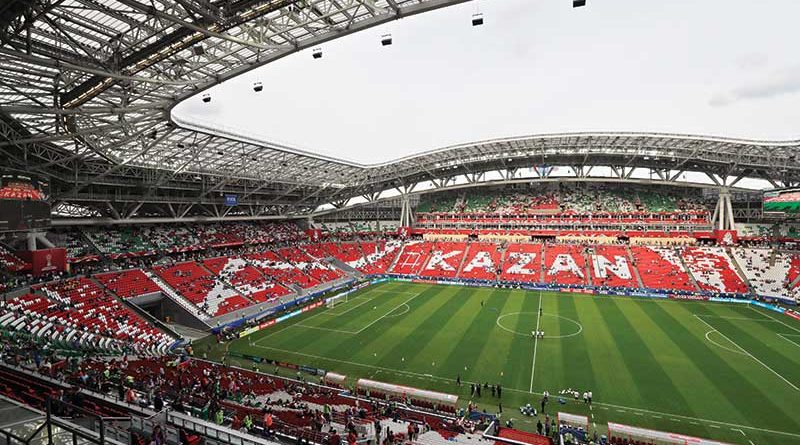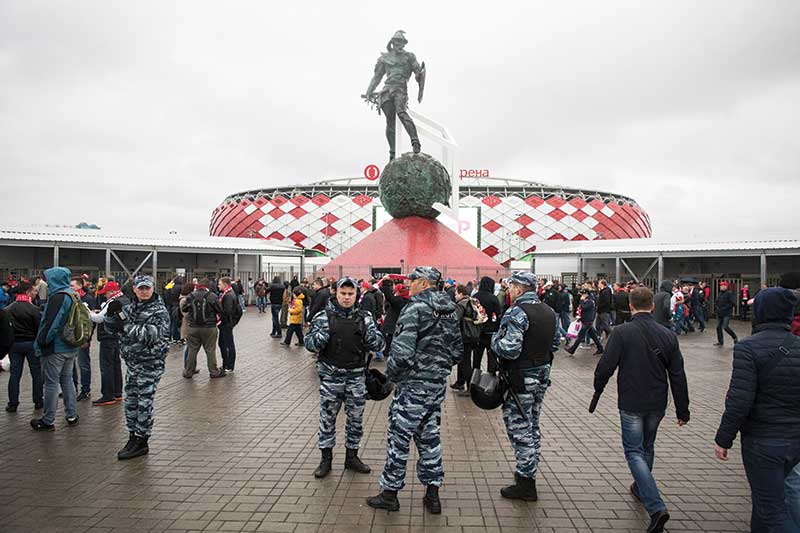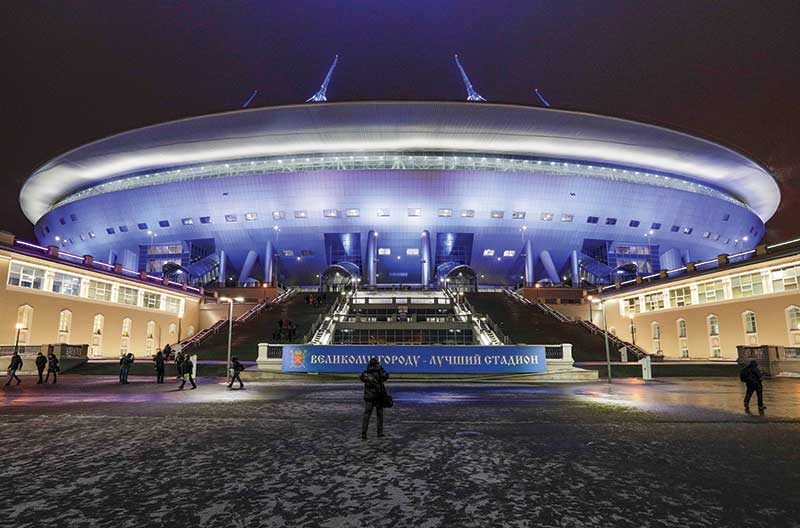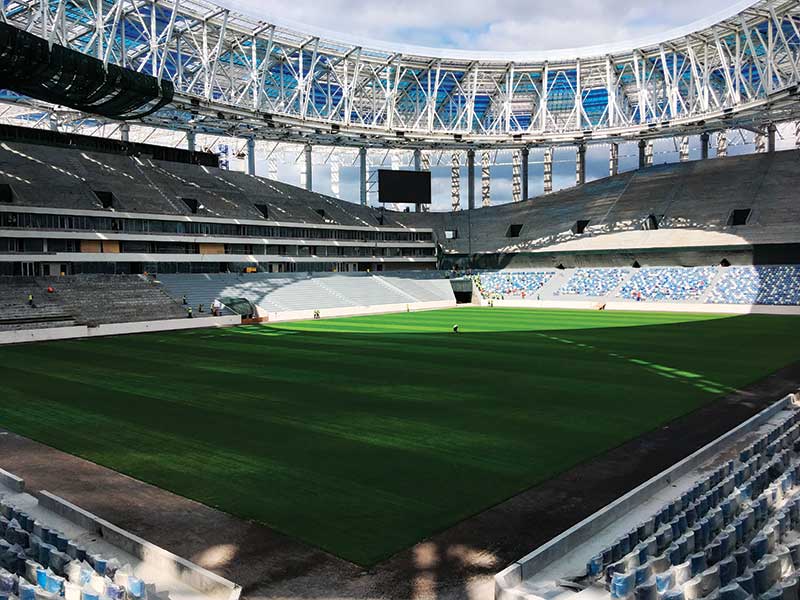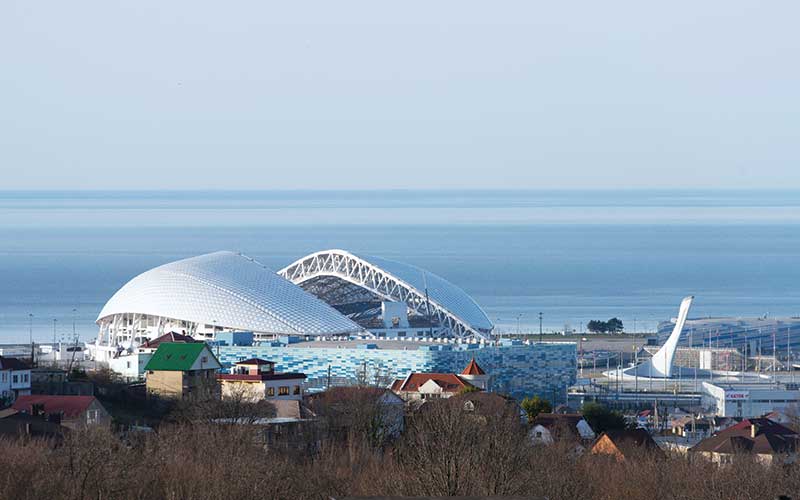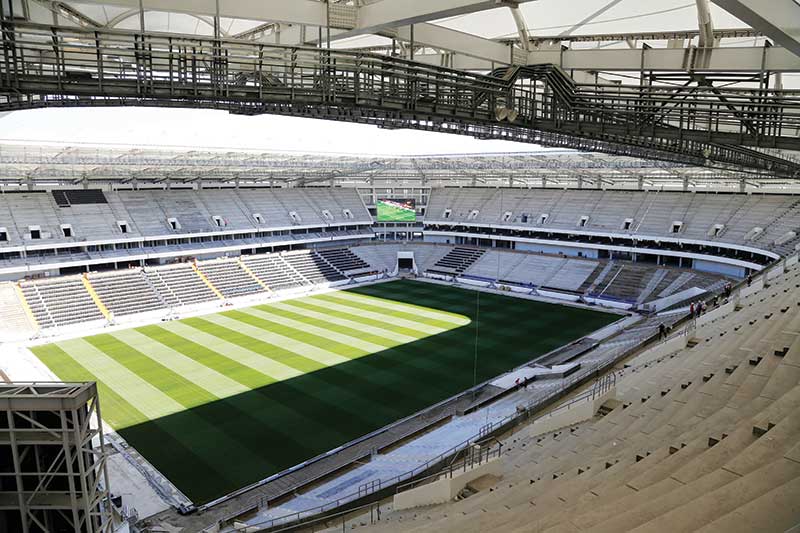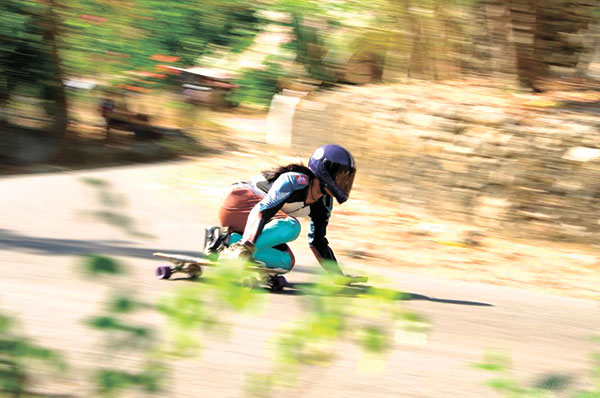Football dads’ guide to the 12 stadiums across Russia
MOSCOW — Russia’s World Cup is spread across 12 stadiums in 11 host cities. They range from St. Petersburg, which is so far north that the sun doesn’t set on some summer days, to Sochi and its subtropical climate on the Black Sea coast. Unlike in Brazil four years ago, venues are finished on time, but there’s sure to be a few last-minute tweaks. Here is a look at the stadiums:
Luzhniki Stadium
City: Moscow
Capacity: 81,006
Cost: $410 million for rebuild
A vast bowl built in the 1950s to showcase the sporting might of the Soviet Union, Luzhniki has been transformed to host the World Cup final. The old stands were ripped out and the athletics track from the 1980 Olympics torn up as the stadium was converted into a football-specific venue. That increases capacity and comfort, while bringing fans closer to the action.
A fan zone will show games on big screens near Moscow State University, on the other side of the river.
Spartak Stadium
City: Moscow
Capacity: 43,298
Cost: $250 million
Home of the 2017 Russian Premier League champion Spartak Moscow, this stadium opened in 2014 and is already well tested as a venue for Champions League and Confederations Cup games.
It is usually known as the Otkritie Arena, but FIFA rules on sponsorship mean a temporary name change for the tournament.
The towering statue of a gladiator outside is a nod to Spartak being named after the Roman slave rebel Spartacus.
St. Petersburg Stadium
City: St. Petersburg
Capacity: 68,134
Cost: $735 million
Located in Krestovsky Island, The St. Petersburg stadium with its spaceship-like arena and retractable roof will host a semifinal.
Also called Krestovsky Stadium and Zenit Arena, the stadium serves as home for FC Zenit Saint Petersburg.
Nizhny Novgorod Stadium
City: Nizhny Novgorod
Capacity: 45,331
Cost: $307 million
With a roof which seems to float atop white columns, the Nizhny Novgorod Stadium has one of Russia’s more impressive designs and will host a quarterfinal.
It also offers fans views of the Oka and Volga rivers, which meet in Nizhny Novgorod, a historic city located around four hours east of Moscow.
Samara Arena
City: Samara
Capacity: 44,807
Cost: $310 million
This stadium in the Volga River city of Samara has an ambitious design — a glass dome evoking Samara’s history as a center of the Russian space program.
The stadium is on the outskirts of the city, so fans should allow plenty of time for travel to games including a World Cup quarterfinal.
Kaliningrad Stadium
City: Kaliningrad
Capacity: 35,212
Cost: $300 million
Kaliningrad is the capital of a sliver of Russian land cut off from the rest of the country and sandwiched between Poland and Lithuania.
Until World War II, the city was part of Germany and called Koenigsberg. Officials are hoping its location and history make Kaliningrad an attractive destination for fans from other European countries.
The stadium has a compact, modest design.
Kazan Arena
City: Kazan
Capacity: 44,779
Cost: $250 million
Opened in 2013 as the first of Russia’s new generation of football stadiums and was used as the prototype for the other new arenas.
It’s a versatile venue which has hosted Confederations Cup football, ceremonies, and even the 2015 world swimming championships, where a temporary pool was installed.
Fisht Stadium
City: Sochi
Capacity: 47,700
Cost: $468 million
Nestled by the Black Sea, Fisht Stadium hosted the lavish opening and closing ceremonies for the 2014 Winter Olympics, and then Confederations Cup games.
Rostov Arena
City: Rostov-on-Don
Capacity: 45,145
Cost: $330 million
The stadium sits on the bank of the Don river and is planned to become the center of a vast new housing and leisure development after the World Cup. When the tournament is over, the stadium will be the new home of FC Rostov, which beat Bayern Munich in the Champions League group stage in 2016 but has since slipped back into the middle of the Russian standings.
Ekaterinburg Arena
City: Yekaterinburg
Capacity: 35,696
Cost: $220 million
Even before it opens, the stadium in the Ural mountain city of Yekaterinburg is famous for its unusual design.
The stadium will be home to Local club Ural Yekaterinburg in the Russian Premier League.
Volgograd Arena
City: Volgograd
Capacity: 45,568
Cost: $300 million
In the city once known as Stalingrad, every spot has wartime history, and the stadium is no different.
Workers during construction had to deal with finding unexploded munitions and soldiers’ corpses from the Battle of Stalingrad. The stadium sits at the foot of Russia’s best-known World War II memorial.
The location meant the stadium had to be designed with a low roof-line so as not to obscure views of “The Motherland Calls” sculpture. German youth players were invited to a test game at the stadium in a gesture of international reconciliation.
Mordovia Arena
City: Saransk
Capacity: 44,442
Cost: $295 million
With a population of just 300,000, Saransk was a surprise choice as a host city.
Located 10 hours by road south-east of Moscow, it’s by far the smallest of the 11 cities but hopes to make up for that with a warm welcome for foreigners at the biggest international event in the city’s history.
Many fans arriving for the World Cup won’t be staying in hotels — Saransk simply doesn’t have enough — but on campsites or in newly finished apartment blocks which will be sold after the tournament.

